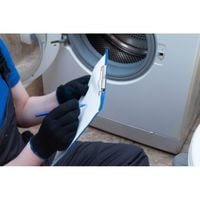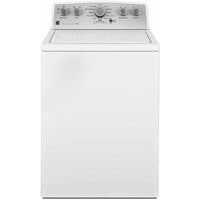Kenmore Washer Overflowing. If you ever have to deal with a problematic Kenmore washing machine, it may seem like quite the challenge. You might not think you can handle the issue on your own.
But by simply thinking about what could be causing the problem, you might find that you can solve it yourself quickly.
When dealing with a problem like an overflowing Kenmore washing machine, there are multiple possible causes to consider.
It may not necessarily be an issue with something mechanical because a defective switch or water inlet valve could cause a similar problem regardless of whether or not they’re connected to the overflow directly.
Kenmore Washer Overflowing

The following is a discussion about Kenmore washer problems when they overflowed.
Household Water Supply Has Low Pressure
Low water pressure at the water inlet valve may be the cause.
In order for the water inlet valve to function correctly, it requires a minimum of 20 psi so that it can operate at its peak efficiency.
When the water pressure is not sufficient, the valve may not be able to shut after the power has been turned off fully.
If this occurs, it may cause the water in your washing machine to leak, resulting in an overflow of water.
It is best to check your current water pressure in case anything falls under regulation – so that you do not have another problem on your hands.
Pressure Switch Problem
The pressure switch allows water to flow into the washer tub when the correct amount of water has been reached.
If a clog develops in the air tube that connects to the pressure switch, the appliance will not properly fill with water, and your laundry will never complete its cycle.
Before you replace your failed pressure switch, take care to ensure that this clog does not also exist in your main drainage pipe, as well as all of your hoses and attachments, before you go through with this replacement.
Inlet Valve For Water
If your washer fails to build up enough pressure while it fills up with water, this could indicate that the water inlet valve may be defective.
One way you can test if this is true is by pressing down on the lid of the washer during its filling cycle.
If pushing down on the lid hinders the washer from filling up with water and continues to fill even when it does not have power, then this points directly at a defective water inlet valve and thus, you should replace it as soon as possible.
FAQs
How could an overflowing washer be caused?
Water pressure at the washing machine’s inlet valve is too low. The inlet valve requires a minimum of 20 psi (pounds per square inch) to shut off properly.
If it doesn’t receive enough pressure, it may not close fully when the power is turned off. The result can be overflow because water leaks into the machine.
Where does all the water go in my washing machine?
One of the least common reasons your washer may be overflowing is due to not getting enough water pressure for the water inlet valve to do its job correctly.
If there’s not enough water pressure, then the water inlet valve will usually stay open too long, causing many problems including over-filling and causing problems with the washer’s cycle and drainage system.
Related Guides
